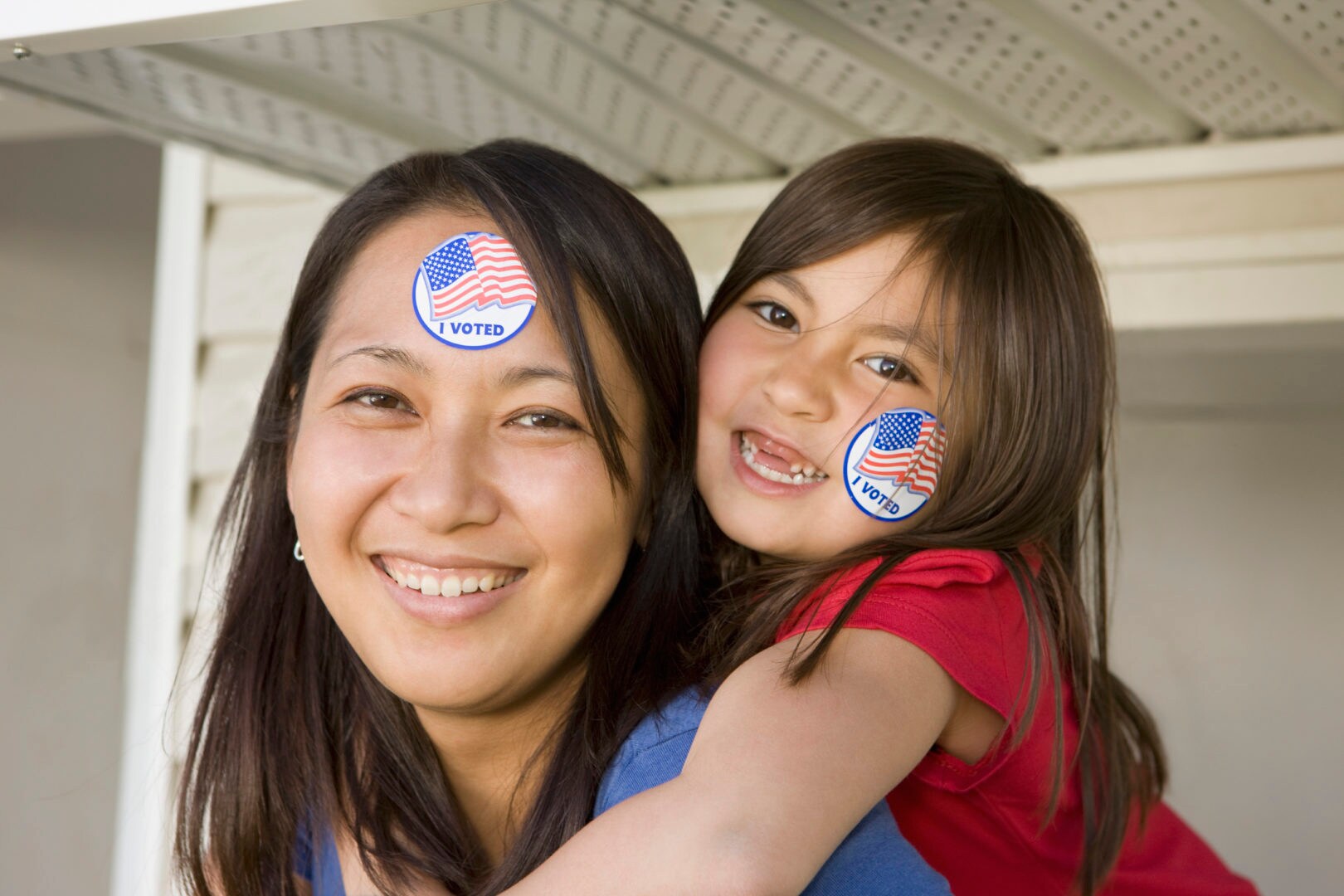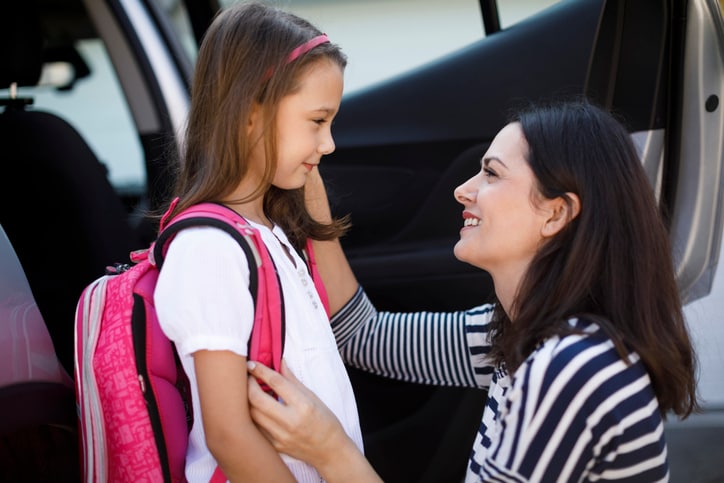With a pandemic raging and social unrest continuing, it’s easy for anyone to feel powerless — even kids. According to a recent study published in the journal Child Psychiatry and Human Development, children as young as 6 are already worried about political issues ranging from social justice to the environment and the economy. But parents can set the stage for turning that anxiety into action, even for the littlest citizens among us.
“Parents might not think that kids would understand an election, but the idea of voting can be incorporated early on,” says Kei Kawashima-Ginsberg, director of the Center for Information and Research on Civic Learning and Engagement at Tufts University. “We say to start talking about voting young because young people aren’t always ready when they are 18. In general, they haven’t gotten a lot of civic education in school.”
Yes, it’s possible to instill a strong sense of civic responsibility in kids no matter how old they are. Here’s an age-by-age guide to the activities you can do with your kids now to ensure they use their voices later.
Pre-K and kindergarteners
Take a vote — on everything
For Sophia Mikell, mom to a 5-year-old girl from New York City, voting is just part of her family’s everyday routine. “We vote on mostly silly things,” she says. “It could be what we want for dinner or the structure of the day – do we clean first, play, then eat?”
Mikell admits her own voting history only goes back to 2016, having previously missed the voting age cutoff then moving abroad. Yet voting has particular significance to her as the great-granddaughter of a refugee. “It’s imperative to me that my daughter understands the importance of collective action, civic action and critical engagement with power structures,” she says. “But I’m still learning [what to tell her] and figuring things out.”
Her approach is a smart one for parents of young children. “We often encourage parents to give [their children] choices — that’s the basic idea of voting,” says Kawashima-Ginsberg. “Kids can always understand that, even if it’s something [as simple] as whether they want chocolate or strawberry ice cream,” she says.
Dr. Wanjiku F.M. Njoroge, psychiatrist and program director of the Department of Child and Adolescent Psychiatry and Behavioral Sciences at Children’s Hospital of Philadelphia, agrees. “The littlest ones are learning how to make decisions and regulate their emotions,” she says. “These activities can be synced up with explaining [simply] why we vote — to help us make good decisions and improve our lives.”
Participate in voting day activities together
“For young children, it’s not just what’s said by parents,” says Njoroge. “Every time you take your toddler into the voting booth with you and they get a little ‘I voted’ sticker, you are very clearly modeling the importance of voting. Kids will start to recognize when it’s Election Tuesday from a very early age.” Njoroge likens it to small children attending religious services regularly. She says, “They don’t necessarily understand it, but they know this is the place we go that day of the week, and that it’s important to the family.”
It’s those small experiences that children may not initially grasp that provide a foundation for their later civic life. “That’s the way you begin to encourage children’s participation in this process,” says Njoroge. “Then when they get to elementary school, they will learn what it is to vote in much more substantive ways.”
Elementary-age children
Advocate for civics-minded education
With the increased focus on STEM learning in recent years, civics lessons can sometimes take a backseat in the classroom. Kawashima-Ginsberg suggests that parents ask school administrators to find other ways to help children better understand our political processes. Activities such as having children organize a voter registration for adults at school or the library teacher talk about information literacy are good places to start. “Teachers can also ask what children think about a [current] event since everything has a civic and political implication to it,” she says.
She adds that in today’s polarized society, it’s more important than ever for parents and teachers to work together. “The ask to principals is really important because many teachers don’t feel like it’s their place [to discuss civics],” says Kawashima-Ginsberg. She and other researchers have found that teachers may be concerned that they can’t discuss political issues for fear of parental complaints. “Parents really do sometimes play a role in reducing the amount of [civics] lessons in the classroom,” she says. Given the great opportunity for socioemotional learning that elementary school provides though, it’s important for parents to ask for more civics, not less.
Get kids voting early
“My kids always ask to mark the ballot for me when I vote,” says April Martin, a mom of a 7-year-old and 9-year-old from Stamford, Connecticut. “I had to wait 18 years to mark the ballot, so they can wait too. I want them to look forward to that.”
For kids who just can’t wait that long, organizations like Kids Voting USA will simulate the upcoming presidential election (as well as some local races) by allowing children to vote online as soon as mail-in voting opens across the U.S. “Parents register their children, who are then sent a voter ID,” says Joannie Collins, chief administration officer of the Arizona Bar Foundation, which manages the site. “Once the children vote online, we mail them a sticker just like the real election.”
Middle schoolers
Let your child lead
“For middle schoolers, a parent’s role is to expose them to different ideas, grabbing a moment of interest and then making it easier for them [to act],” says Kawashima-Ginsberg. She suggests showing your tween magazine articles or a movie that deals with current events to see what resonates with them. “They might not be that vocal at that age, so start with something they already show an interest in.”
If they seem intrigued by issues of social justice, for instance, then you could for local opportunities, such as driving by a march to see if they might want to join in. “You want to focus on their independence instead of telling them what to do,” she says. “And if there’s been activism, they are far more likely to vote.”
What if you don’t feel equipped to interact with your child on politics, especially if you haven’t voted yourself for a while — or ever? “I always tell parents honesty and transparency are what’s most important,” says Njoroge. “Just say, ‘I have not been voting, and I have no reason not to have, but I’m changing that now.’ It’s owning up to [your behavior] whether your child is 6 or 16.”
If parents don’t have the information needed to answer all of children’s questions, they shouldn’t be afraid to seize the learning opportunity. “Parents may not know how to answer hard questions, but then the whole family can start a research project,” says Kawashima-Ginsberg. “If a child asks, ‘Can a woman ever be president?’ instead of saying, ‘Well, maybe someday,’ parents need to turn this into an open question, explore history and talk about what makes someone qualified. You can say, ‘Let’s look into it together or Google together.’”
Make screen time count
You may not want your child to be even more glued to their tablet or phone; however, in the case of the iCivics website, that time may be worth it. Its free online resources give kids the chance to explore how to win the White House or ratify the Constitution. The site, launched by former Supreme Court Justice Sandra Day O’Connor, also connects online action to activism. The Impact Points program enables players to earn points during the game, which are then converted to real charitable donations.
High schoolers
Take out the guesswork
Teens may be ready and willing to vote, but registering may seem daunting. Parents can simplify the process by helping kids secure the documents they may need, such as a birth certificate. Kawashima-Ginsberg recommends that parents approach their children directly and ask them if they are ready to vote, then discuss the steps needed. “Let them know this is something they need to prepare for and do their homework on because the rules are changing all the time,” she says.
Make sure teens are truly empowered
From knowing who their local representatives are to how to write op-eds on their own or with a group, teens can be moved to action — and eventually the voting booth. “It’s on all of us as adults to support that and foster that and encourage that even when we ourselves may be discouraged,” says Njoroge. “Voting is about a hope that we can make a difference that impacts lives now and generations from now. This is part of parenting — you have to hope for a better future.”
And Kawashima-Ginsberg says there is reason to be positive. According to her research, 27% of teens have participated in protests in the past year, a five-fold increase in four years.
“[Teens] are really active even if they are not talking to their parents about it,” she says.
Ultimately, the key is to make sure children understand the issues and the voting process so that they can turn their interest into impact. “The ideal for parenting and education,” says Kawashima-Ginsberg, “is to make sure kids feel prepared, efficacious and inclined to vote by the time they turn 18.”






